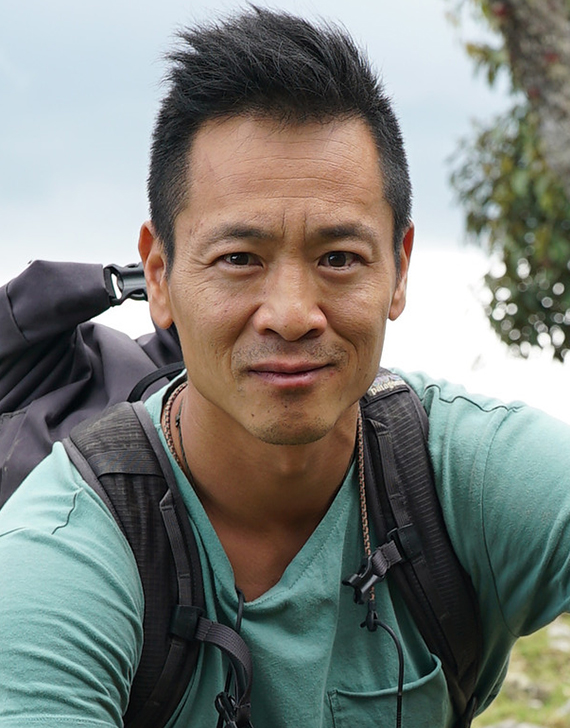
Albert Lin
Albert Lin is, quite literally, a modern-day high-tech explorer, blurring the boundaries between man and machine while redefining how we explore our own humanity. He stands out as one of the most prominent and versatile amputees worldwide, having lost his leg in 2016. Lin maintains a relentless quest into the farthest reaches of our planet, employing a technologist’s approach to unearth captivating stories of both humanity and the natural world.
His journey began with the Valley of the Khans project, a pioneering initiative that harnessed technology to search for Genghis Khan’s tomb. Leveraging an innovative tool kit of forest- and ground-penetrating technologies, Lin scoured vast terrains while respecting the traditional beliefs of Indigenous communities, which called for noninvasive exploration. This project marked the genesis of his application of similar approaches that led to groundbreaking discoveries across the globe.
One of his most noteworthy accomplishments involves using lidar (laser mapping) and cutting-edge technologies to uncover ancient cities concealed beneath the canopies of remote jungles, mountain ranges, and deserts. These remarkable expeditions have been brought to a global audience in various adventure-driven factual TV series, including “Lost Treasures of the Maya,” “Buried Secrets of the Bible,” and “Lost Cities with Albert Lin.” Beyond ancient history, Lin’s “seeing the invisible” mantra extends to the natural world, where his curiosity gives way to awe, as showcased on National Geographic’s “Welcome to Earth” and “Explorer.” Lin’s uniquely approachable personality and “be-there-with-me” style that merges science, adventure and discovery has become the hallmark of his storytelling.
With a Ph.D. in science and engineering from UC San Diego, Lin’s chops add to his authenticity. Early in his career, he was the driving force behind National Geographic’s pioneering crowdsourcing effort to assist his expedition in Mongolia, using satellite imagery and public participation, a concept he transformed into the platform known as Tomnod, which has since engaged millions of individuals in projects ranging from search and rescue missions to humanitarian and environmental monitoring. His broad imagination has since led to multiple university research centers, clinical trials and technology startups, earning him numerous awards for his discoveries and inventions. But, as he has always said, “Innovation is just one way to serve the deeply human desire to explore our frontiers.”
Ultimately, Lin defines a new age of exploration. He has scaled the imposing walls of Yosemite’s El Capitan, traversed the arid deserts of Arabia, and dove into the deepest underground lakes in Africa with cutting-edge technologies in his backpack, all in the pursuit of a lifelong sense of wonder. Today, as a globally recognized explorer and a trailblazing amputee, he stands as an inspiration and advocate for the indomitable human spirit.
See also QI articles “Behind the Scenes with National Geographic Explorer Albert Lin,” “The Psychedelic Science of Pain,” “Lim[b]itless: UC San Diego Researcher Empowers Amputees with 3D Printed Prosthetics,” and “New Grant Funds Clinical Trial to Assess Psychedelic as Treatment for Phantom Limb Pain.”